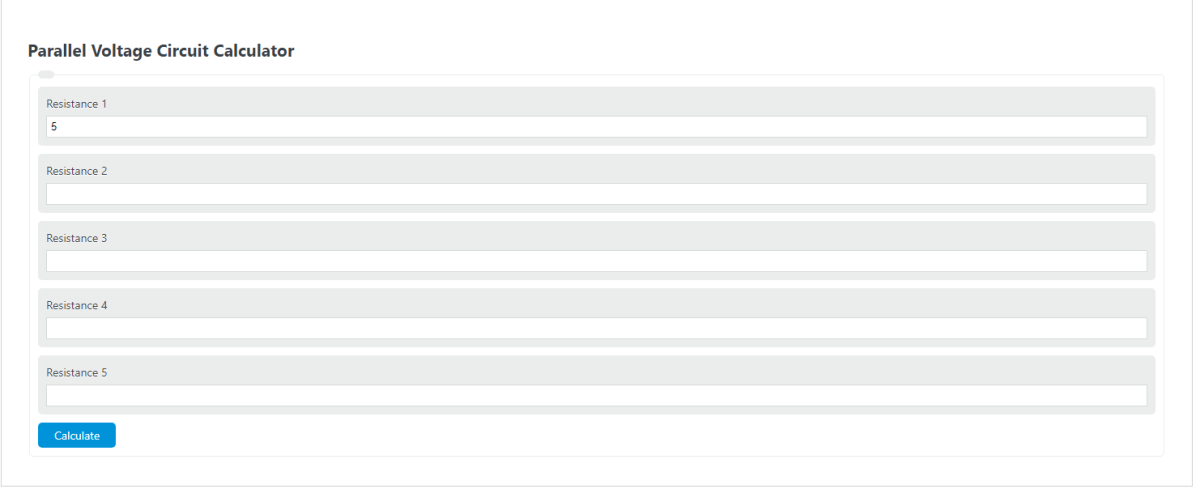Enter up to 5 different resistances into the calculator to determine the equivalent resistance of the parallel voltage circuit.
- All Electrical Calculators
- Voltage Divider Calculator
- Parallel Impedance Calculator
- Parallel Resistance Calculator
- Parallel Capacitor Calculator
- Voltage Imbalance Calculator
- Series Voltage Calculator
- Accelerating Voltage Calculator
Parallel Voltage Formula
The following formula is used to calculate an equivalent voltage for voltages in parallel.
V = v1=v2=v3=v4=v5
- Where V is the equivalent voltage
- v1 to v5 etc, are the individual voltages in parallel
To calculate the parallel voltage, simply determine the voltage of any element in the series.
Definition
What is a parallel voltage?
A parallel voltage, or parallel circuit, is a circuit in which each component of the circuit receives the same amount of voltage as the source provides.
So, if the source voltage is 50 volts, each component would receive an equivalent amount of volts. The number of volts leaving those components would be different depending on the resistances of those components. To explore this further, visit our voltage divider calculator.
Example Problem
How to calculate parallel voltage?
There isn’t much involved in calculating a parallel voltage, it is simply the same as the source voltage. Sometimes, however, source voltage along with two resistance in a voltage divider circuit is provided and the output voltage must be calculated. That is the example we will look at.
For this example, the source voltage is 50 volts, R1 = 20 ohms, and R2 = 30 ohms.
Using the formula, the output voltage is calculated as:
Vo = R2 / (R1+R2) * Vi
Vo = 30 / (20+30) * 50
Vo = 30 volts
